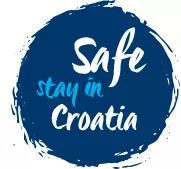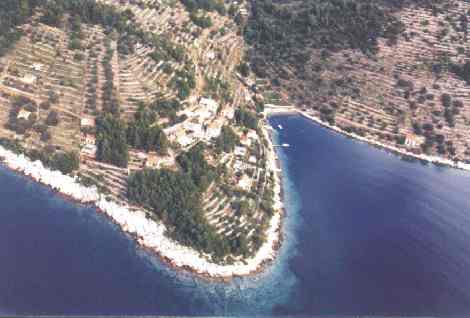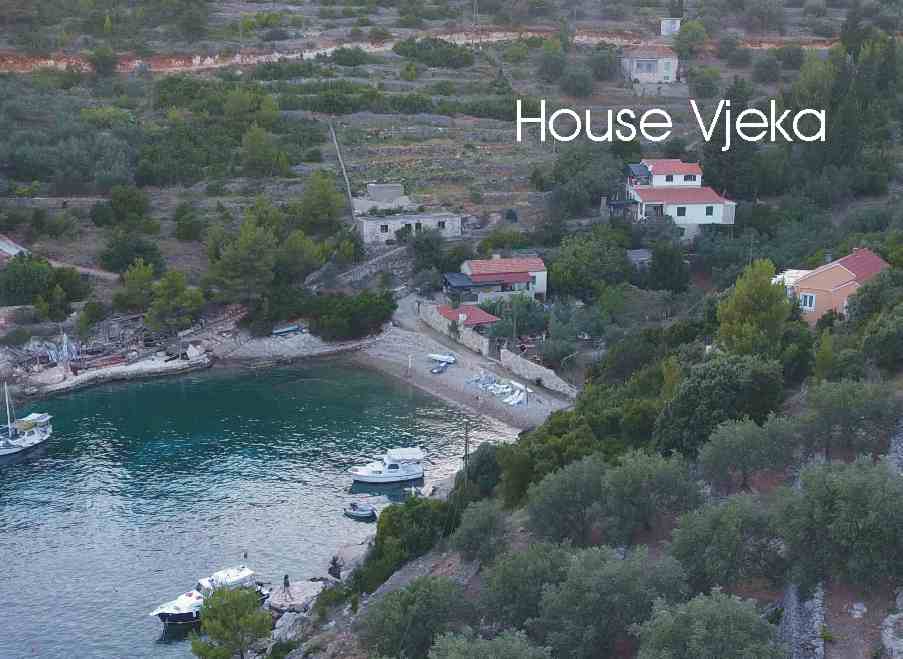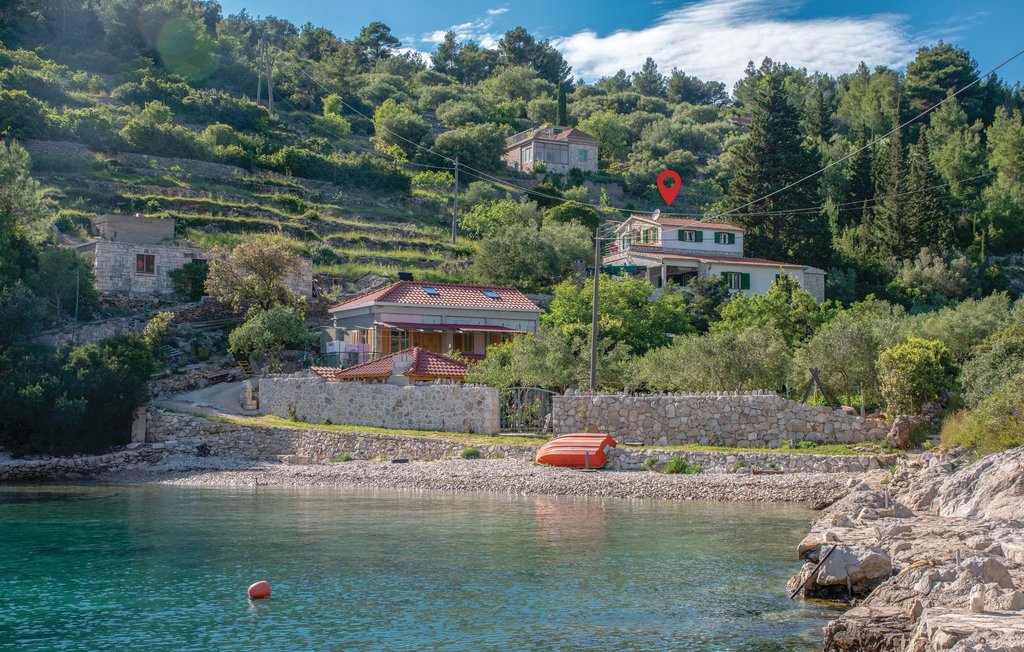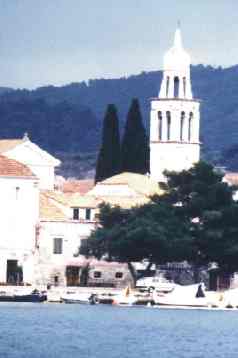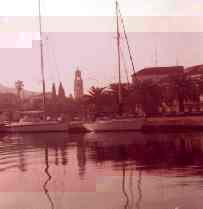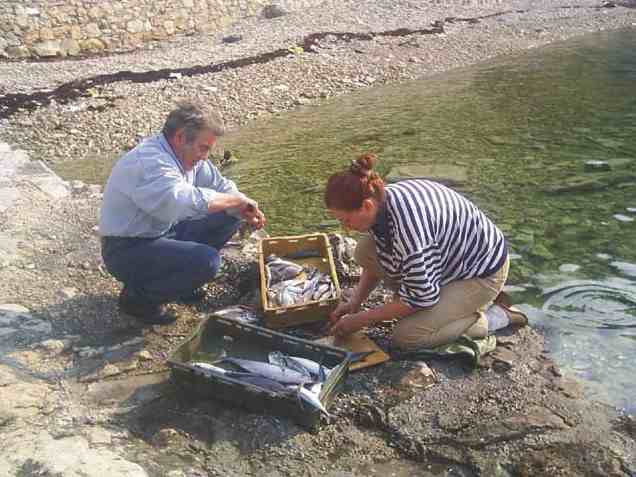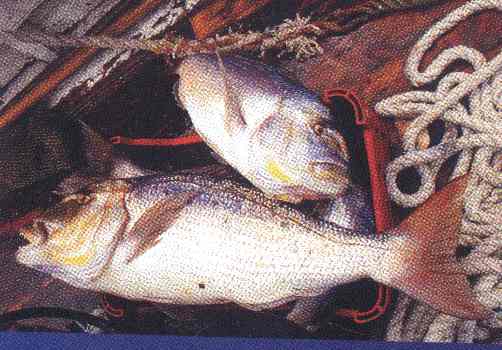| History
VELA
LUKA (4.464
inhabitants) is today the biggest town on the island. It is situated in
a deep bay at the very western end, 47 km from the town of Korcula,.
Vela Luka is at the same time both the oldest and the youngest
settlement on the island. Vela Spilja (Big
Cave) - the most significant evidence of prehistoric Korcula
- is on the hill Spilinski rat, northwest from the town itself, and 100
meters above sea level. A rich Neolithic culture of Hvar circle
(3200 years B.C.), this branch was communicating by sea with its
neighbors of the Adriatic and the Mediterranean. An important collection
of finds is exhibited in the Ethnographic Museum
in the palace of Franulovic-Repak near the parish church. There
are also articles from the Hellenic and early middle Ages in the region
of Vela Luka. Later on, human in this area life became scarce due to the
danger of living in an unprotected environment near the sea. The bay was
used as e harbor and trading port for Blato where is sanctuary
of St Marija Petkovic.
A new political situation and the subsequent ending of fear from
pirate attack brought a quick renewal of life in this bay. After the
arrival of its first modern inhabitants in 1795, Vela Luka has rapidly
become the biggest Korcula settlement. The local people work mostly in
the shipyard that constructs plastic boats, then in the fishing boats
and the sardine factory. There is also work in hotels and smaller
industries but chiefly they cultivate their olive groves. Vela Luka is
the greatest producer of olive oil in Croatia. The parish church
of Saint Joseph is in the very middle of Vela Luka. It is a
to-Baroque building from 1846-48, in front of which there is a very
interesting public cistern for drinking water dating from 1930. The
Museum with the Neolithic collection, ethnographic collection, and with
the gallery of works by sculptors and painters who were working in Vela
Luka in the 1960-s during the summer symposiums, is situated between the
church and the wharf. There is one outstanding sculpture by the great Henry
Moore. The oldest local church of Saint Viceniz, from 1489 is in
the vicinity.
|
Walking along the shore north from the harbor,
one arrives at the bay of Kale, where valuable layers of medical sea mud
of the leman type are found, by which this small bay got its name. This
mud and local mineral water can successfully cure rheumatic diseases and
treat the post-traumatic conditions. A well-equipped Institute for
Rehabilitation, Kalos, was erected here
in 1972. Walking further one by the same
way we come to hotel Poseidon
and the public bathing establishment and organized
diving tours.
A branch road leads in the bay of Plitvine where
then is a big modern hotel Adria with
several tennis courts, and lot of other sports and rehabilitations
activities, and there is the connection with taxi boats to the
islands Osjak and
Proizd
More to the west lay Mikulina luka were are the
apartments and if you walking further Gradina one of the most
interesting areas of Vela Luka.
Its name reminds us of Illyrian times, and a
one-aisled church of Saint John from 1419 is located on this picturesque
peninsula, together with the ruins of a Benedictine monastery. The
northwest coast of the bay was, until recently, closed as a forbidden
military zone. From the center of Vela Luka towards the south, we get to
the pier for the daily ferry connection with Split and the island of
Lastovo then to the shipyard and the sardine factory. They
are planted on terraces that cover the whole side of a hill. Outside
Vela Luka bay on the south coast of the island there is one of the most
beautiful and calmest of Korcula bays. A very beautiful view of the bay
and surroundings extends from the top of mount Hum (376 m, south of the
town), where there is a marine observation post that was installed by Austrian
navy during 19.century. Vela Luka is famous for its signets of Dalmatian
songs and for its singers who are among the most popular in
Croatia. such as Oliver Dragojevic, Jasna Zlokic and Eli Zuvela One of
the leading contemporary Croatian poets, Danijel Dragojevic.The painter and sculptor, Izvor Oreb, were born in
Vela Luka too
Taxi-boats and other passenger transfer boats depart from Vela Luka to
favourite excursions points in the bay, Plitvine "Hotel Adria"
to the island Osjak (Island of Love protected by a preservation law as a
wooded park) and to the island Proizd with excursion facilities (The crystal blue sea, and nude beaches). Vela
Luka "summer nights" is full of entertainment events.
|
